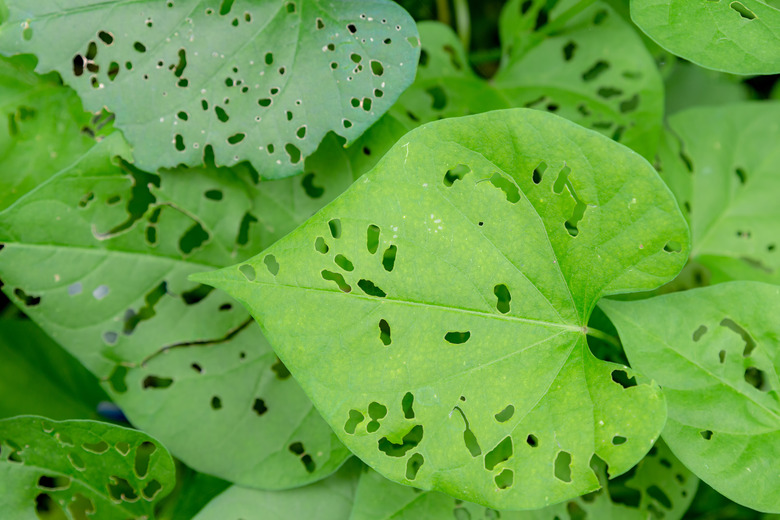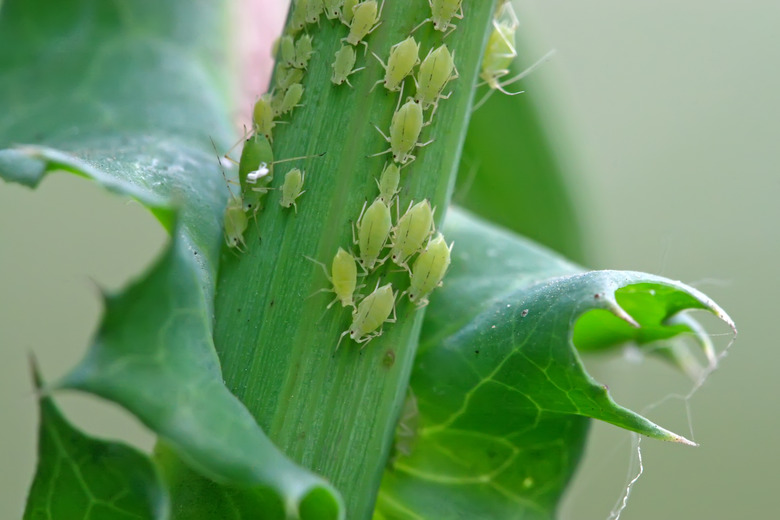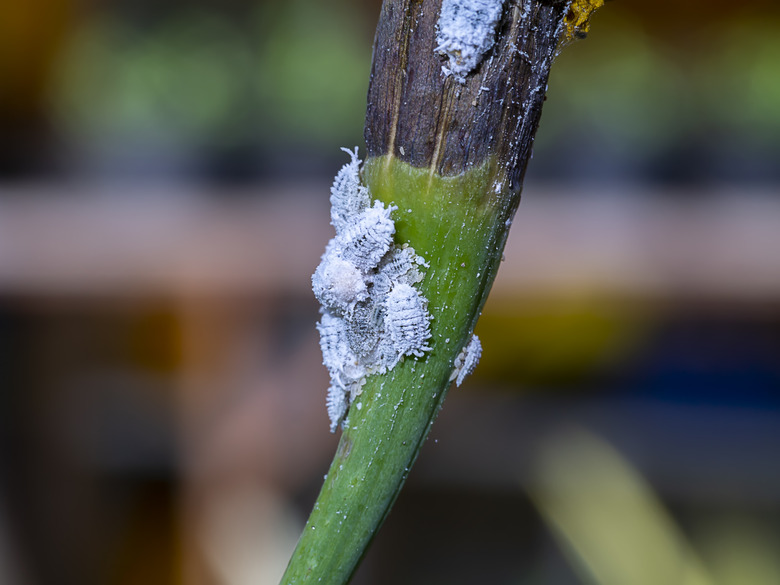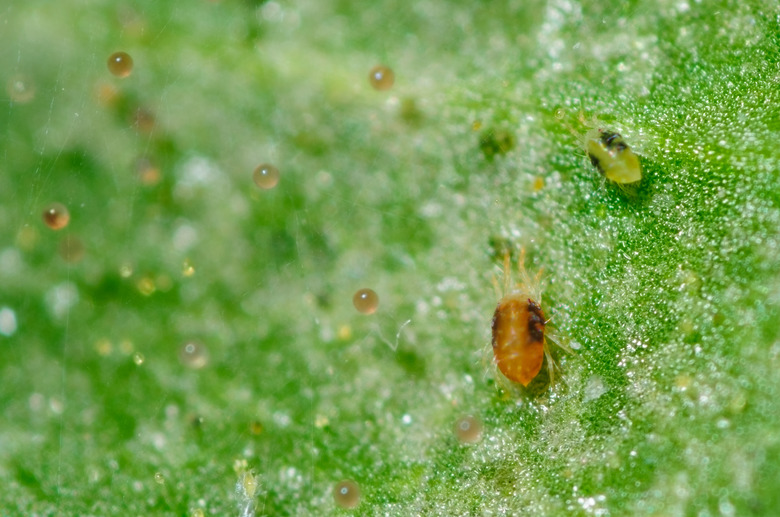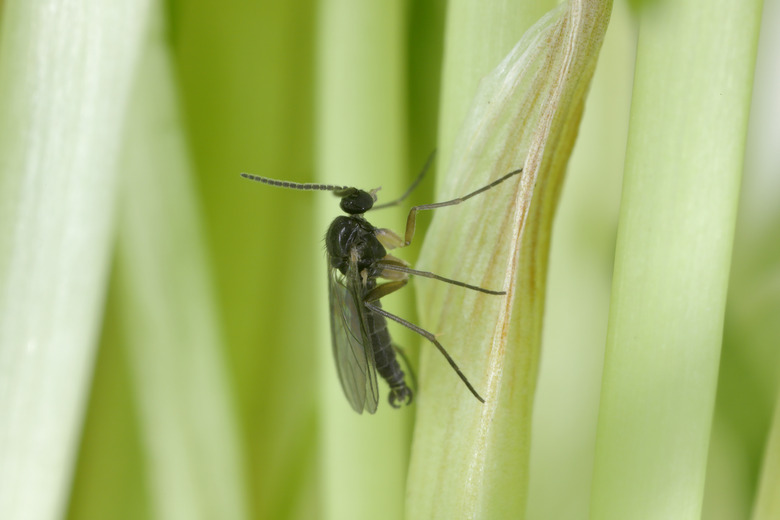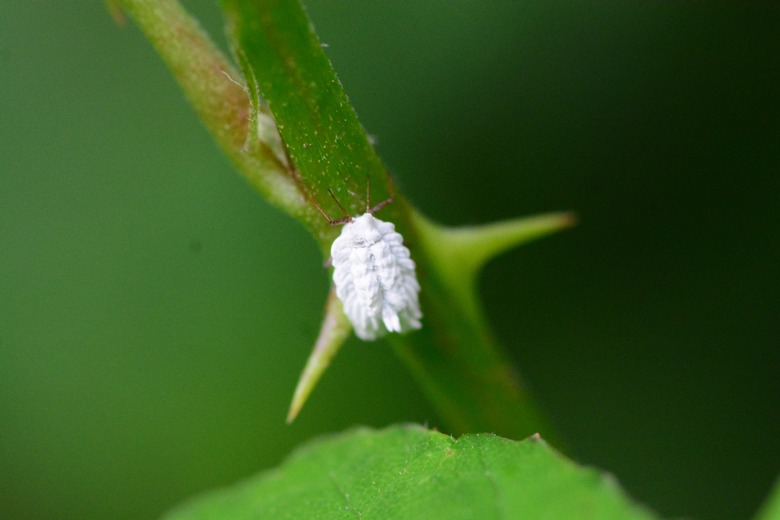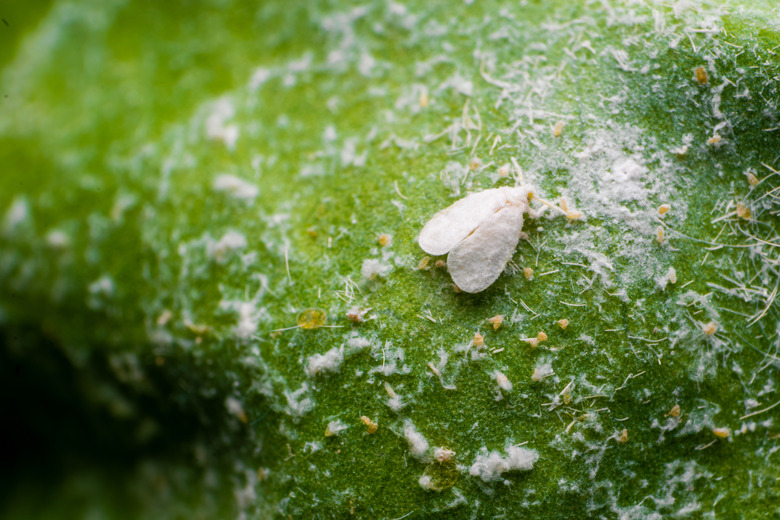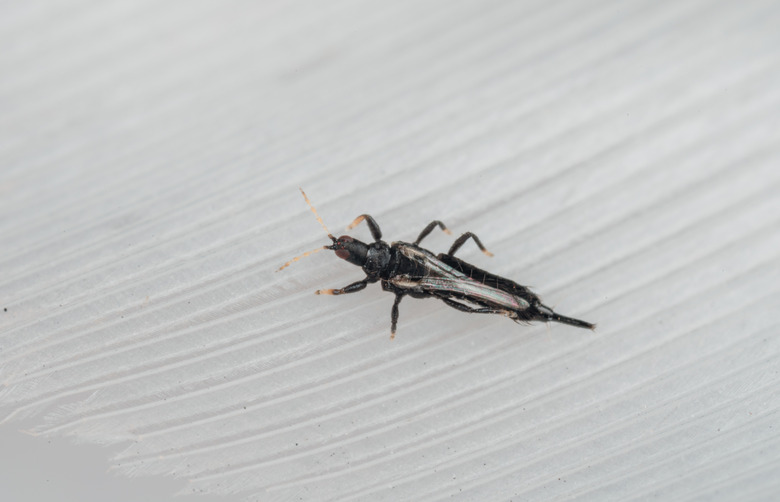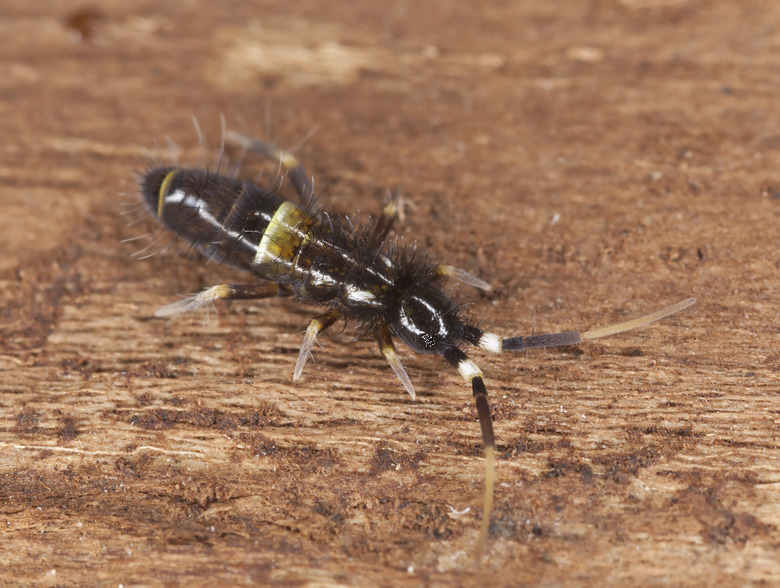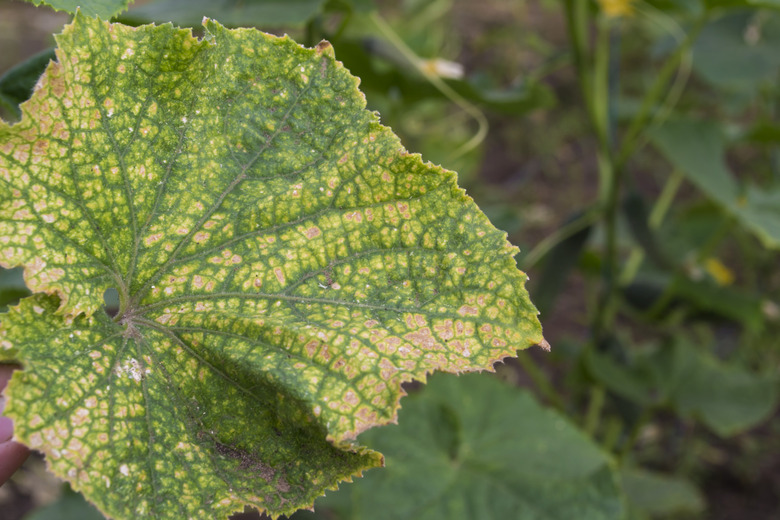The 9 Most Common Bugs On Houseplants — And How To Get Rid Of Them
We may receive a commission on purchases made from links.
While gardeners fully expect to battle bugs when growing plants outdoors, it's frustrating finding pests on houseplants. Although bugs can easily hitch a ride when you bring houseplants in for the fall, even plants that stay in all year can become infested.
The first step to eliminating houseplant bugs is to know which insects you're dealing with, and often that can take some sleuthing since they're so small (sometimes even microscopic). Need to identify which pest is bugging your houseplant? Here's a list of the nine most common — and how to get rid of them once you figure it out.
Tip
Exercise caution when using any pesticides on houseplants. Even organic and natural pesticides, like insecticidal soap, can damage certain houseplants, such as peace lilies (Spathiphyllum spp.) and jade (Crassula arborescen). Always check the label on any plant products you use for both proper usage instructions and a list of plants that could suffer negative effects.
1. Aphids
1. Aphids
Often found on the underside of leaves, aphids are tiny insects that are only about 1/16 to 1/8 of an inch long. Most are green, but pink, brown, black, and yellow aphids do exist. Aphids actually represent a double threat to your houseplants. First, they suck the sap out of your plants, leaving the leaves yellow and mangled. Secondly, feeding aphids leave behind a sticky substance called honeydew. This can attract mold fungi, which will create ugly dark patches on the plant's leaves.
If you see only a few aphids, you can pick them off by hand or hit them with a cotton swab dipped in rubbing alcohol. Spraying the plant with an insecticidal soap is also an option. These soaps only work when they come into direct contact with the aphids, however, so spray only when you can see your target pests present on the plant. If the plant is large enough to withstand it, you can also take it outside and shoot off the aphids with a jet of water from your garden hose.
Pyrethrin-based pesticides and neem oil can also solve aphid problems in houseplants, as can placing imidacloprid plant spikes in the soil. If you choose a different type of insecticide, make sure you take your plant outside before spraying it. This keeps more toxic chemicals away from yourself, your children, and your pets.
2. Mealybugs
2. Mealybugs
Measuring about 1/8 to 1/4 inch long, mealybugs are slow-moving, soft-bodied insects that can cause a real problem for houseplants. Mealybugs cause the same issues as aphids but are harder to kill. This is because the insects cover themselves in a white waxy film that repels most pesticides.
Mealybugs like soils with high nitrogen content, so consider forgoing fertilization if you see mealybugs. Like aphids, you can pick mealybugs off the plant by hand, wipe the plant's leaves down with alcohol, or shoot off the bugs with a jet of water. You can also try various pesticides, including pyrethrins and others, again taking the plant outside when using more toxic pesticides. Sometimes, however, the only option is to discard heavily infested houseplants so you can prevent spreading a mealybug problem to your other plants.
3. Spider Mites
3. Spider Mites
Biologically more like spiders than true insects, spider mites are barely visible pests that do look like tiny spiders up close. Because they're so small, plant caregivers often notice wispy webbing on the plant rather than the mites themselves. If left unchecked, spider mites will suck enough sap from indoor plants to turn the leaves yellow and ultimately kill the plant.
Spider mites are an indoor problem and don't survive long outdoors. The simplest way to resolve a spider mite problem is to set your houseplants outside during the summer months to kill the mites naturally. Because they reproduce so quickly, it's also important to quarantine plants affected by spider mites and trim away heavily infested leaves and branches.
You can also treat spider mites with insecticidal soap or with a pesticide that contains sulfur, but the mites tend to adapt quickly to pesticide chemicals. You may need to treat your plants with the sulfur pesticide once a week for several weeks to make sure you get all of the mites. If that fails, experiment with a different pesticide.
4. Fungus Gnats
4. Fungus Gnats
Measuring a scant 1/8 inch long, fungus gnats are often seen walking across or flying near houseplants. The adults are a nuisance but won't harm your plants, as they prefer to eat decaying matter that is already dead. Their larvae, however, can prove quite destructive, as some species will eat the roots of your houseplants as they mature.
You may see the larvae in the soil around your plants. They're about 1/4 inch long and have white bodies topped with black heads. They can kill a young plant easily and cause more established plants to lose vigor or drop leaves.
Fungus gnats like moist, damp soil, so drying things can usually eliminate them quickly. Make sure you're not overwatering your houseplants and if your plants can tolerate it, let the soil dry completely between waterings. Make sure you don't let water sit in the saucers under your plants, and invert the saucers if you move the plants outside so rainwater doesn't collect in them. If reducing your watering schedule doesn't help, treat the soil with a compound containing Bacillus thuringiensis.
If your gnat problem persists, you can use yellow sticky traps to catch adults and try a soil drench to kill off any larvae. One drench recipe is to dilute one part hydrogen peroxide (a standard 3 percent solution) with four parts water and pour it over the plant's soil until water judiciously runs out of the drainage holes. You can also purchase a neem oil drench at your local garden center. Chemical pesticides are generally not needed for fungus gnats.
5. Scales
5. Scales
Scale insects are odd little bugs that come in two main varieties: armored and soft-bodied. Armored scales cover themselves with a whitish waxy armor, while soft-bodied scales look like little brown blobs. Measuring from 1/16 to 1/2 inch around, neither type of scale appears to have feet, often looking more like a blob of fungus than an insect. Scales like to feed on the underside of leaves but can appear anywhere on a plant.
You can remove both hard and soft scales from your houseplants by scraping them off the plant with your fingernail. If that sounds like a little too much close insect contact for you, you can treat scales with neem or other horticultural oils. Armored scales are somewhat protected from pesticides by their outer coating, but oil works well on both types of scale, as it smothers and suffocates them. It doesn't need to find a way into the insect like toxins do.
6. Whiteflies
6. Whiteflies
A bit of a misnomer, whiteflies do look like tiny white flies, but they are much more closely related to mealybugs and aphids than they are to flies. These small flies also act like their close relatives, sucking the sap out of plant leaves and secreting a sticky honeydew that encourages fungi to stick to and grow on the plant.
Unlike aphids and mealybugs, the 1/10- to 1/16-inch whiteflies can fly and will take flight if disturbed. They don't go far, though, and will hover around the plant briefly before settling back down. If left untreated, whiteflies cause the leaves of houseplants to turn yellow and die. The plant's overall growth may also appear stunted.
The treatments for many of the most common houseplant pests are very much the same. Like most houseplant pests, you can handpick whiteflies off in small numbers or simply wash them off the plant. You can also treat problems with insecticidal soap, neem oil, or imidacloprid spikes. If you choose cyfluthrin, acetamiprid, or another more potent insecticide, take care to move your plant outside before applying it so you're not spraying these toxic chemicals inside your home.
7. Thrips
7. Thrips
Yellow or black in color, thrips measure less than 1/16 of an inch and are difficult to spot. You're more likely to see the damage thrips leave behind than the insects themselves. This damage includes a silver appearance to leaves, leaf drop, and oddly colored streaks in flower petals. Thrips can also cause flower buds to die without ever opening.
To confirm the presence of thrips, use a magnifying glass to examine your plants. Be sure to check leaf folds and look between flower petals. If you don't have a magnifying glass handy, blow gently onto the plant or into a flower. This will agitate the thrips and cause them to move around more quickly than usual, making them easier to spot.
Like other sap-sucking insects, thrips can often be removed from the plant with a stream of water or an application of insecticidal soap. You can also trap thrips with blue sticky traps. For larger infestations, pesticide sprays work best. For flowering plants with thrips, the best cure is a systemic pesticide, like imidacloprid spikes or acetamiprid, that can kill unseen thrips hiding in closed and inaccessible flower buds.
8. Springtails
8. Springtails
Long and skinny, springtails are fuzzy-looking black bugs with segmented bodies growing up to 1/4 inch in length. They can't fly, but they can jump, so you may wish to distance yourself from them a bit. Since they prefer to eat decaying organic material, springtails generally don't leave behind a lot of plant damage. They have been known to nosh on plant roots from time to time, however, and most plant keepers don't like seeing them squirming through the soil.
Springtails usually indicate overwatering. If you allow your houseplants to dry out thoroughly between waterings, most springtail problems will solve themselves. You can also rid them by sprinkling a bit of diatomaceous earth on the top of the soil. Diatomaceous earth only works when it's dry, so you'll still have to water less often if you choose to use it.
9. Broad Mites
9. Broad Mites
Unfortunately, this is one pest you don't want to find on your houseplants — and you probably won't. These microscopic insects are impossible to see with the naked eye and can be hard to spot. They can also live inside plants where you can't see them even with magnification. Instead of looking for the mites themselves, look for the damage they cause. If you notice stunted plant growth, curling leaves, and leaves changing color with no discernible cause, you may have broad mites.
Broad mites reproduce at an astounding rate, completing a full life cycle within 5 to 13 days. Because each generation is so short-lived, it takes these pests no time at all to churn out young that are immune to pesticides, making chemical controls virtually useless.
Broad mites dislike heat, so you can try completely immersing your plant in water of 110 degrees Fahrenheit for 30 minutes. If you do, it's imperative that you immerse the entire plant and keep it quarantined well away from other houseplants while waiting to see if the situation improves. You can also try treating your plant with dicofol. Sadly, the best treatment for most broad mite damage is to dispose of the infested plant.
Prevent Pests On Your Houseplants
Prevent Pests On Your Houseplants
Don't have a houseplant infestation yet? Luckily, there are a few ways to prevent damage from occurring in the first place.
- Keep fresh-cut flowers and other produce away from houseplants. One way to prevent pests is to keep fresh cut flowers you bring in from the garden well away from your houseplants. Carefully inspect these flowers and any fresh produce you bring into your home, making sure you're not accidentally bringing pests with you.
- Check before adding new plants to the house. Inspect new houseplants and keep them isolated from your existing collection for a few days after you purchase them.
- Store potting soil properly. Stash any unused potting soil in airtight containers to keep out insects.
- De-stress your plants. Do your best to care for your houseplants properly since stressed plants are more likely to attract and succumb to pests.
Even with these precautions, houseplants can still become infested. Some bugs are so tiny that they can easily come into your home through cracks, under doors and windows, or even through window screens. If you find yourself with a problem, you'll want to identify the pests and get rid of them as quickly as you can, hopefully before they damage your plant. In most cases, you'll find yourself dealing with very common household pests, so there is plenty of help available.
